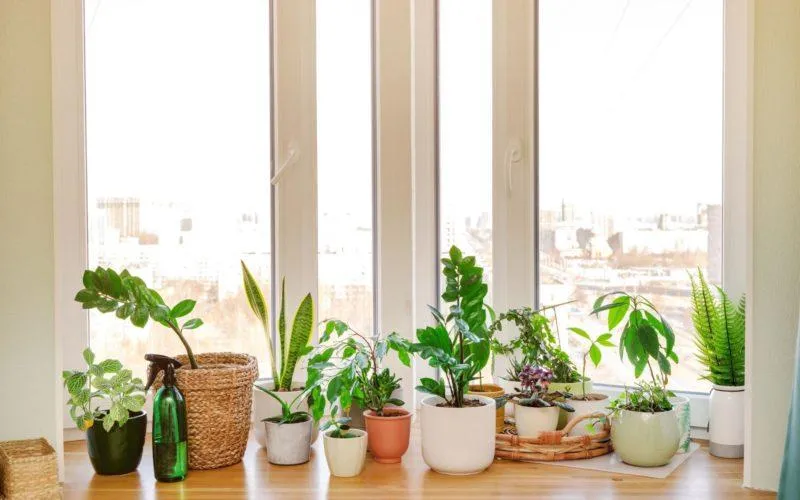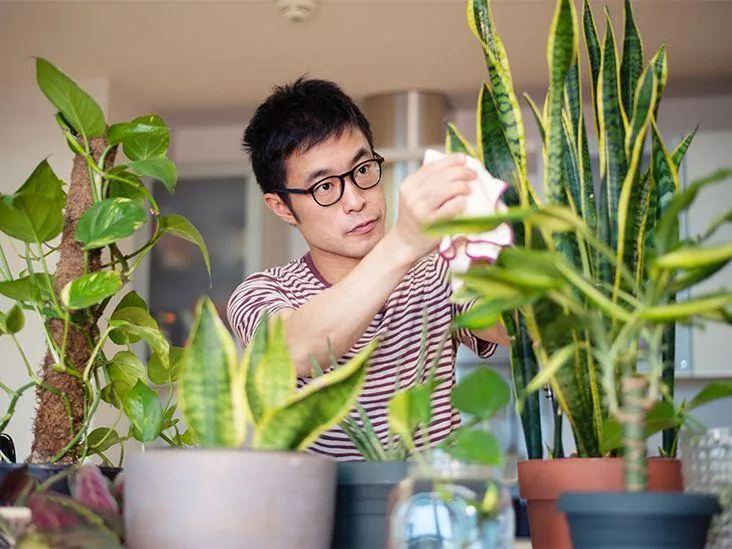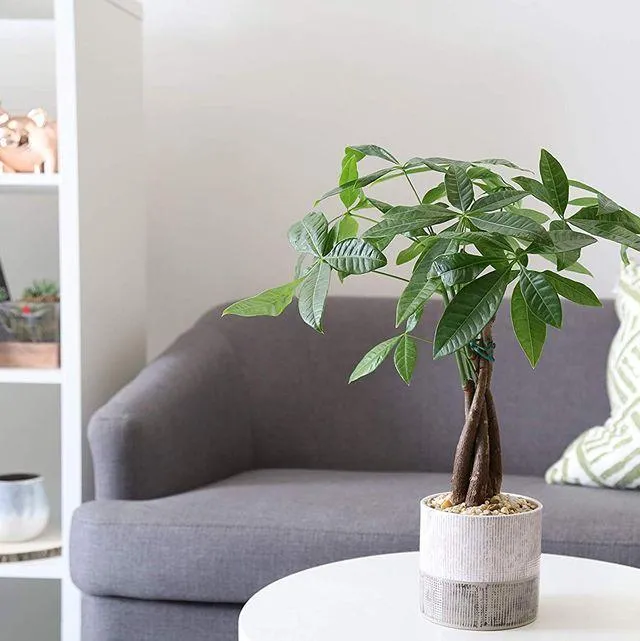A Guide to Trees That Thrive Indoors
If you love the look and feel of trees but don’t have outdoor space, fear not – there are several tree varieties well-suited for growing inside your home. In this article, I’ll cover the top indoor tree options, care requirements, and tips for success based on my experience as an indoor plant enthusiast. By the end, you’ll know which trees are practically foolproof for life inside.
Ficus Trees
Ficus trees, or ficus benjamina, are likely the most popular indoor tree variety. With their low maintenance needs and thick, glossy leaves, they make beautiful houseplants. From my experience, their tolerance for low light has made ficus trees practically synonymous with indoor trees. However, they do need occasional pruning to maintain their shape.
The most common variety is the weeping fig tree, with its cascading branches. They start fairly small but can grow 6-8 feet tall indoors with time. Give them medium to bright indirect light and keep the soil consistently moist but not soggy. Repot them every couple years in the spring. Neglect their watering even once and their leaves may brown – so stay on top of it!
Dwarf Umbrella Trees
If you want the look of a mini palm tree, dwarf umbrella trees are a great option. As the name implies, they stay relatively small, only reaching 3-4 feet tall usually. They have the same neat, rounded canopy shape as full-sized umbrella trees. From my experience, their compact size makes them perfect for small spaces. Plus, they tolerate low to medium light very well.
Water them when the top inch of soil feels dry. They’re drought tolerant so underwatering is usually a bigger issue than overwatering. Repot them every 2-3 years in the spring. Pinch back new growth occasionally to maintain bushiness. Overall, they’re very low fuss and bring palm tree charm indoors.
Jade Plants
This list wouldn’t be complete without mentioning jade plants! They may not seem like trees at first, but mature jade plants can grow 3+ feet tall and take on a bonsai-like tree form. I’ve personally found they’re some of the toughest indoor plants around. Jades leisurely handle low light and vary dry conditions better than most. Overwatering is really the only thing that seems to cause them issues, in my experience.
Let the soil dry out between waterings. Use terra cotta or plastic pots, repotting every 2-3 years in the spring. Prune or pinch back stems as needed to maintain shape. Place jade plants in bright windows or under grow lights. With their waxy leaves and slow growth, they make lovely, low maintenance mini “trees” for indoors.

Dwarf Date Palms
For a touch of the tropics indoors, dwarf date palms are an excellent pick. In my experience, their feather-like fronds add so much charm and grandeur to a space. They start out small, around 1-2 feet, but can reach 5-6 feet tall over time. Provide them with bright, indirect light and keep the soil slightly moist but not soaked.
Mist the foliage occasionally if humidity is low. Repot every 2-3 years in spring. Palms, like jades, are quite tolerant of low light and dry spells compared to other houseplants. Just don’t let them stand in water. Place in terra cotta or plastic containers. Overall, they bring a sense of relaxation and luxury when grown indoors.
Dwarf Schefflera
For a tree with adorable miniature tropical leaves, dwarf scheffleras are superb. Their leaves resemble tiny versions of the larger outdoor schefflera species. This variety capped at 3-4 feet maximum, so they work well near windows or as tabletop plants. Like other trees mentioned here, they prefer medium to bright indirect light.
Water when the top inch of soil dries out. Prune as desired to shape. In my experience, they’re not too fussy about watering frequency either – somewhat drought tolerant even. Propagate new plants easily from stem cuttings too! Scheffleras give such a charming forest feel wherever you place them.
Caring for Indoor Trees
While the tree species above have been bred to tolerate low light conditions indoors better, they still need certain care essentials to thrive long-term. Here are some tips based on lessons I’ve learned:
- Water – Monitor moisture in the top 1-2 inches of soil. Most prefer allowing it to dry slightly between waterings.
- Fertilize – Use a diluted liquid houseplant fertilizer every 4-6 weeks in the spring and summer.
- Repotting – Do every 2-3 years in early spring, sizing up the container 1-2 inches.
- Light – Position in a bright, sunny window or supplement with grow lights in low-light areas.
- Humidity – Mist foliage weekly if indoor humidity is low, below 40%. Or use a pebble tray.
- Pruning – Trim as needed to maintain shape and control size over the years.
Following these basic care steps will help your indoor tree thrive for many years. With the right variety and growing conditions, you really can enjoy a miniature “forest” indoors for beauty any time of year!
Common Issues and Solutions
No gardener is immune to the occasional plant pest or disease. Here are some potential problems indoor tree owners may face, along with remedies from my own toils:

Brown Leaf Tips or Edges
This is typically from dry air or overwatering. Improvement involves increasing humidity, checking for moisture retention in the soil, and adjusting watering frequency accordingly.
Spider Mites
These tiny pests cause stippling on leaves. A strong spray of water to dislodge them works, along with neem oil or insecticidal soap as a preventative. Isolate affected plants at first signs as a precaution.
Mealybugs
Fluffy white spots on leaves or stems indicate these pests. Wipe leaves with cotton balls dipped in rubbing alcohol. Spray plants thoroughly with neem oil every 5-7 days for 1-2 weeks to fully eliminate them.
Rootbound Pots
Symptoms include lack of growth and wilting. It’s time to repot into a slightly larger container using fresh potting soil. Careful not to damage the root ball in the process!
With diligence watching for potential issues and quick remedy action, you can keep your indoor trees growing strong for many years. Let me know if you have any other tree care questions!
Final Thoughts
As you can see, there are definitely tree varieties well-suited to thriving indoors. Whether you want a mini landscaping focal point or just to experience a bit of greenery, some variety of indoor tree can add rustic beauty all year round. If cared for properly, many last for decades through proper pruning and repotting. Heck, I even know folks who bonsai prune ficus trees indoors!
Experiment until you find the right tree type personality for your environment and care habits. With a little TLC, they’ll bring lasting verdant charm to small spaces. Good luck, and happy growing! Let me know if any other tree questions come up.

Indoor Tree Species Comparison
| Species | Height | Light Needs | Care Level | Ideal Locations |
|---|---|---|---|---|
| Peace Lily | 2-4 feet | Low to medium | Easy | Bathrooms, bedrooms |
| Chinese Evergreen | 3-6 feet | Medium to bright | Easy | Living rooms, offices |
| Rubber Plant | 4-8 feet | Medium to bright | Easy | Living rooms, offices |
| ZZ Plant | 2-4 feet | Low to medium | Very easy | Any indoor area |
| Dracaena | 3-6 feet | Medium | Easy | Living rooms, offices |
FAQ
-
What types of trees will grow indoors?
There are several different trees that can basically survive inside. Plants like dwarf date palms and fig trees do pretty well in rooms with lots of natural light. money trees and bonsai trees also tend to work out okay.
-
How much sunlight do indoor trees need?
Most indoor trees require a good amount of sunshine every day. Around six or more hours of direct light near a south or west facing window usually gets the job done. However, tropical varieties that grow in jungles don’t always need quite as much sun. So you have to kind of figure out the light needs for whatever type of tree you bring inside.
-
What is the best soil for indoor trees?
A nice loose potting soil works great for indoor trees. You want the soil to drain well so it doesn’t stay soggy. Something like an African violet potting mix with compost added usually gives trees the nutrients they need. Many tree experts also suggest adding perlite or gravel to the bottom of pots for extra drainage.
-
How often should indoor trees be watered?
The watering schedule can differ a lot depending on the tree type and light conditions. As a general rule, check the soil during the summer months. If the top inch gets dry, it’s a good time to water. In the winter when light is lower, trees might only need water every couple weeks. The key is watching the tree for signs of thirst like dropping leaves.
-
What are some common problems with indoor trees?
Pests and lack of light are maybe the most frequent problems. Mealybugs, aphids and spider mites can plague trees that don’t get enough sun. Too little water or improper drainage often causes leaf drop too. Keeping trees in bright spots and monitoring them closely helps prevent most issues.
-
Is it hard to care for an indoor tree?
As long as you match the tree type to your light conditions and water appropriately, caring for an indoor tree isn’t too tough. I mean, they obviously need more attention than a plastic plant. But as long as you put in some effort, many trees can survive inside homes for years and years. It’s very satisfying watching a tree grow from just a small potted plant.
-
Some final tips for indoor tree care?
Some last pieces of advice: fertilize in the spring and summer, repot trees that get pot bound, and dust leaves occasionally. Watch for signs the tree might be under or over watered. You may also want to move trees around to get optimal sunshine as seasons change. With that kind of care, your indoor trees should stay healthy for a long time to come.

